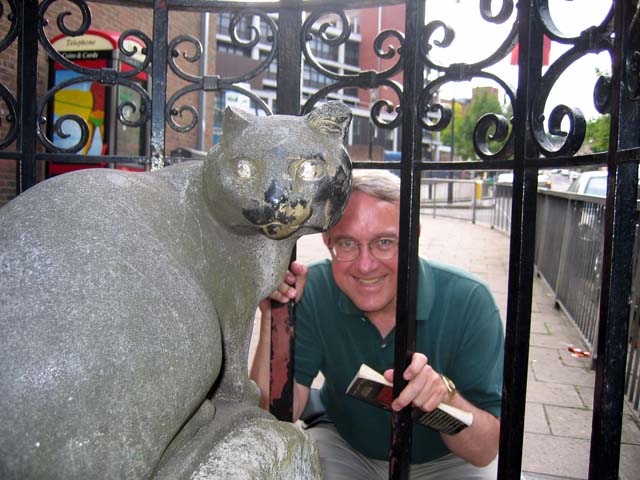

Back in about 1986 I visited London with some friends from college, Sid Fulford and Sid Hopkins (who died of a heart attack about a year ago, sad to say). Before that trip I found a book by film critic Roger Ebert that purported to be a guide to the "perfect" London walk. Well, you know what? The two Sids and I followed the instructions in the book and had a perfectly wonderful day exploring a part of the city that most tourists never see.
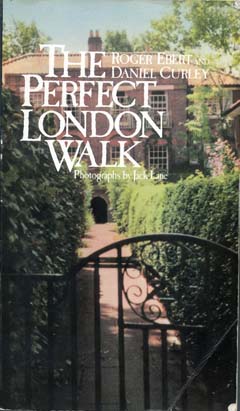
That's the cover of the book.
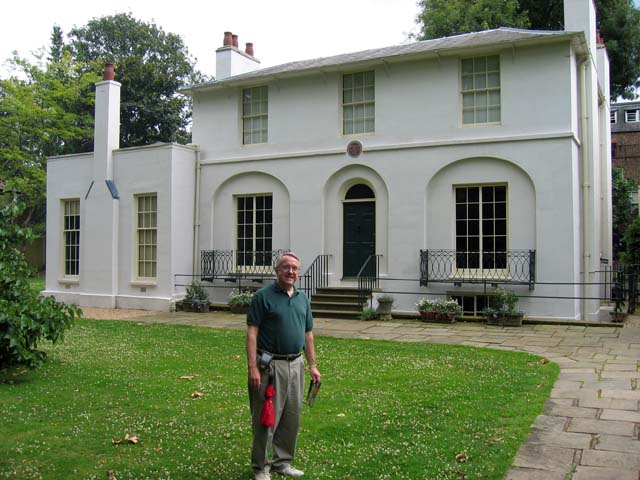
So on Sunday afternoon July 18, 2004, I persuaded Patty Currier to join me for as much of the walk as we could manage. It's pretty much an all-day affair, and we had only the afternoon. But we did pretty well, as you'll see. The walk begins at the Belsize Park tube stop, about an inch north of the area covered by most tourist maps of London. It covers Hampstead Heath, Parliament Hill, Highgate Cemetery, and other interesting places most visitors to London never see. Here I am standing outside John Keats' house. Holding the book.
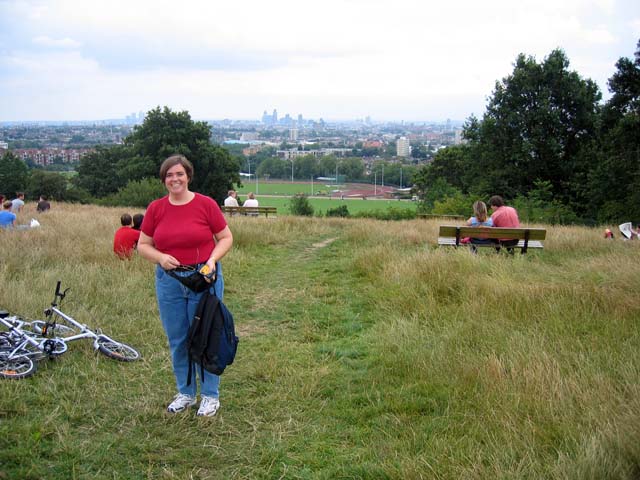
There's Patty on Parliament Hill, with all the city of London in the background.
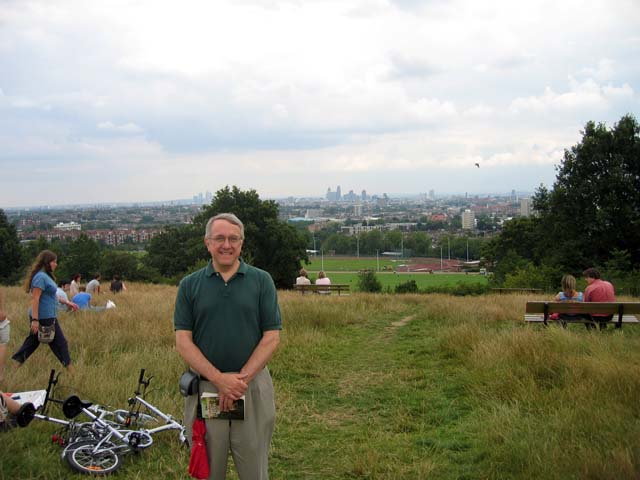
Me. Same background. Same book.
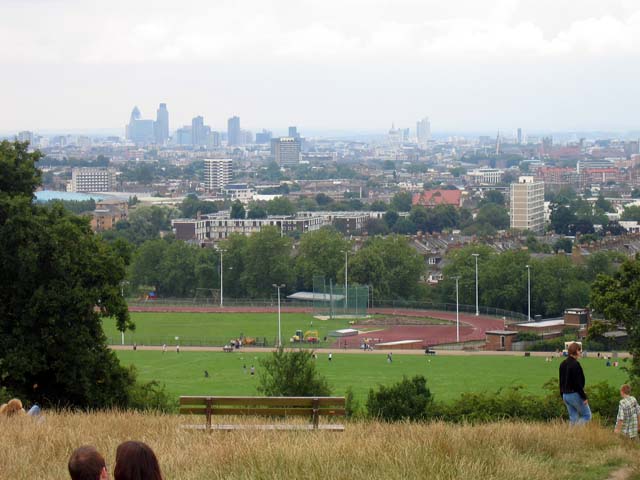
Closeup of the same background.
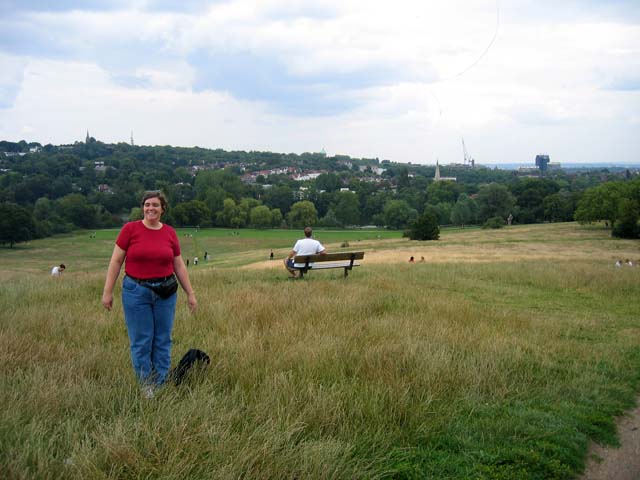
There's Patty with a different background. We wanted to keep these pictures interesting.

It was an overcast day, but that didn't discourage the Londoners. They'll take any excuse on a summer day to lie around in the grass. Never mind that it's cool and almost rainy. This is about the best weather they can expect all year.
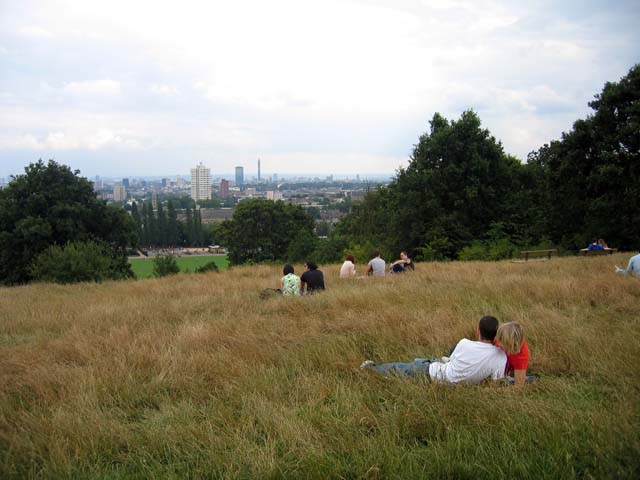
Awww.
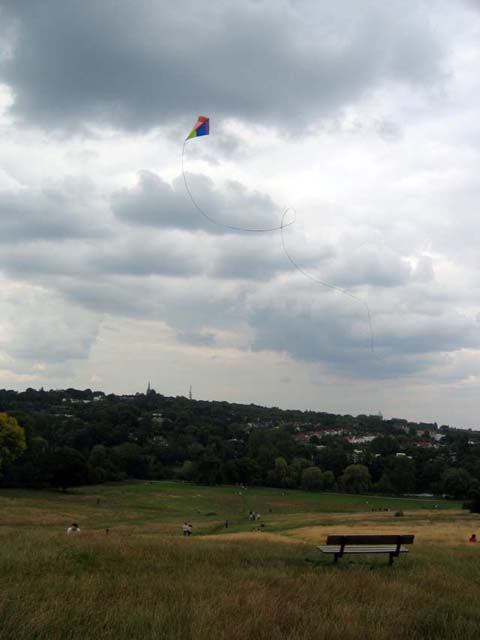
Hey, look! A kite!
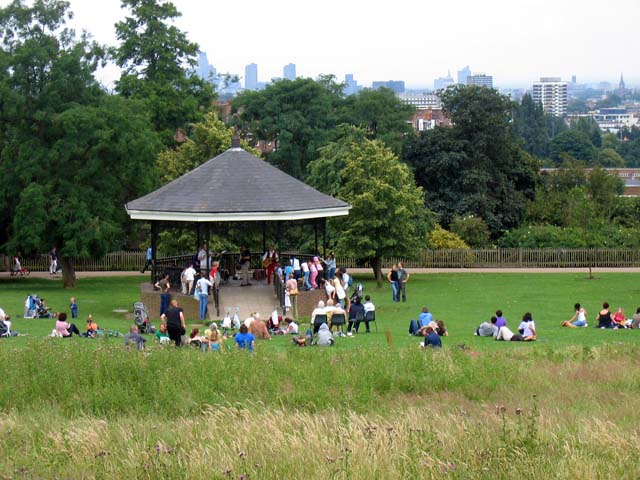
And a band in a gazebo. They were playing "My Wild Irish Rose."
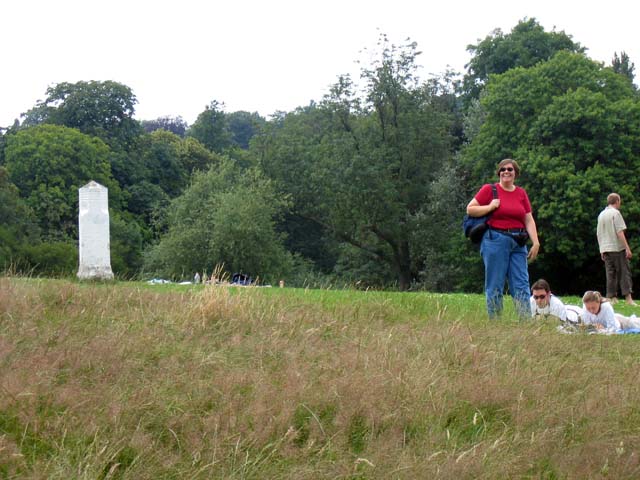
Patty just had to see what was on that marker. Turns out there was nothing on that marker.
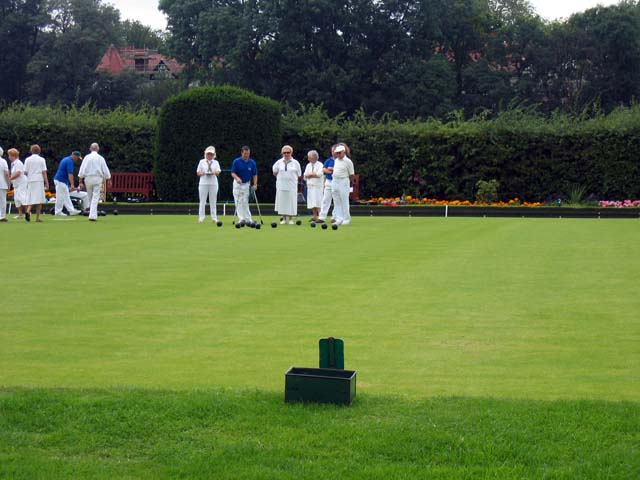
Lawn bowling.
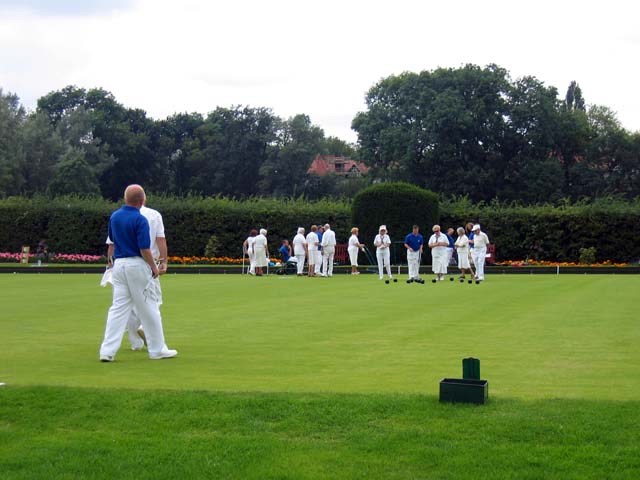
Actually, I have no idea whatsoever what they were doing, but with the green grass and the white outfits, they sure looked spiffy.

There are two parts to Highgate Cemetery. On one side of the road is the modern part where Karl Marx is buried. But the really interesting section is on the other side of the road, among the Victorian crypts where Hammer Films used to make horror movies. Patty and I hurried, hurried, hurried across Hampstead Heath and with a bit of luck we made it to Highgate for the last tour of the day. In fact, we were the last two people admitted to the last tour of the day. Whew. Here I am surrounded by dead people. Holding a book.
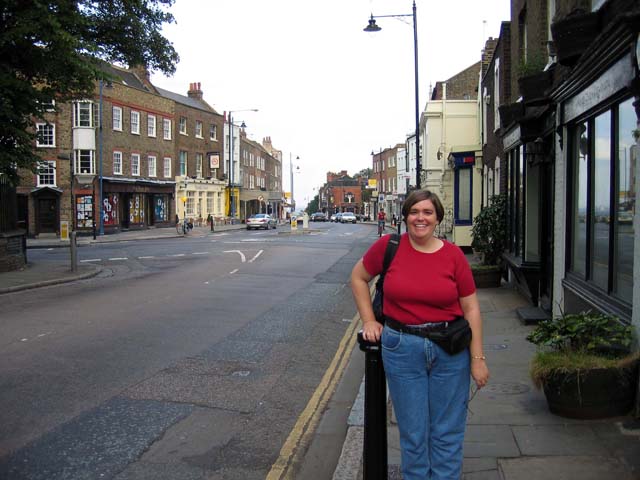
And there's Patty on Highgate High Street.
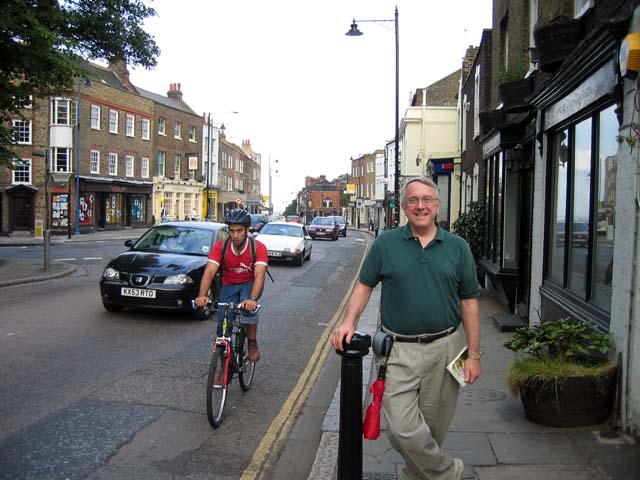
Here I am in the same place along with a guy on a bicycle. And a book.
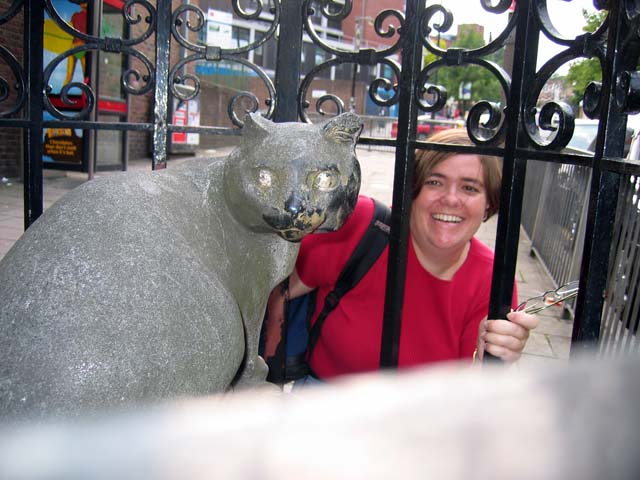
We found the monument to Dick Whittington's Cat. Do you know the story?
|
